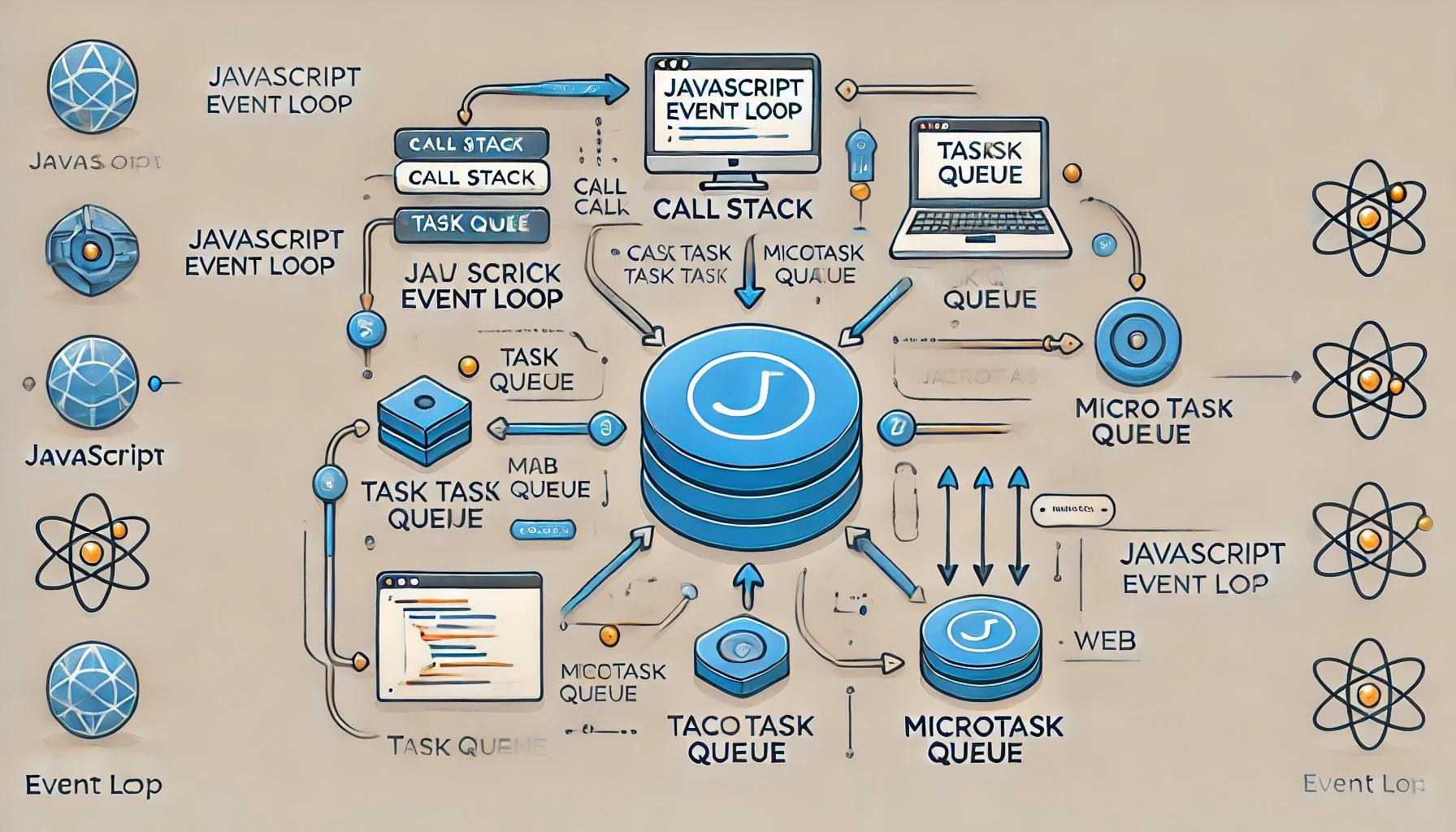Sajiron
Understanding the JavaScript Engine, Runtime, and Event Loop

JavaScript is a versatile programming language widely used for building interactive web applications. Behind the scenes, the execution of JavaScript code is managed by its engine, runtime environment, and event loop. In this blog, we’ll dive into these concepts to demystify how JavaScript works under the hood.
JavaScript Engine
A JavaScript engine is the core program that executes JavaScript code. Well-known examples include Google’s V8 engine, powering Chrome and Node.js, and Firefox’s SpiderMonkey. Although implementations vary, most JavaScript engines comprise two main components:
Heap: A memory space used to store objects and manage unstructured data.
Call Stack: A data structure that tracks the execution of functions. When a function is called, a "stack frame" is pushed onto the call stack, storing details about the function and its variables. Once the function completes, its frame is removed. If the stack is empty, no code is currently running.
JavaScript Runtime Environment
The runtime environment provides the broader infrastructure for JavaScript execution. In browsers, this includes various web APIs, such as:
Timers (setTimeout, setInterval)
HTTP requests (fetch, XMLHttpRequest)
DOM interaction methods (document.querySelector, element.addEventListener)
These APIs enhance JavaScript’s capabilities by enabling interaction with the web and other external systems.
Event Loop
The event loop is integral to JavaScript’s concurrency model, ensuring non-blocking execution of asynchronous tasks. It operates in a continuous cycle:
Remove a task from the task queue.
Execute code until the call stack is clear.
Process all pending microtasks in the microtask queue.
Apply any changes to the DOM.
Restart the cycle.
This mechanism allows JavaScript to handle asynchronous operations seamlessly.
Task Queue
The task queue holds asynchronous callbacks, such as those added by web APIs. Known also as the "message queue" or "callback queue," it stores tasks from functions like setTimeout and setInterval.
When the call stack is empty, the event loop picks a task from the queue and executes it.
Microtask Queue
The microtask queue operates similarly to the task queue but handles microtasks, which have higher priority. Microtasks include:
Callbacks from promise.then(), promise.catch(), and promise.finally().
Async/await callbacks.
Tasks explicitly added using the queueMicrotask() function.
The event loop processes all microtasks before moving to the next task in the task queue.
Bringing It All Together
Consider the following example to understand how these components interact:
console.log('Start');
setTimeout(() => {
console.log('Task Queue: setTimeout');
}, 0);
Promise.resolve().then(() => {
console.log('Microtask Queue: Promise');
});
console.log('End');Expected Output:
Start
End
Microtask Queue: Promise
Task Queue: setTimeout
Here, synchronous code (console.log('Start') and console.log('End')) runs first, followed by the microtask (Promise), and finally, the task from setTimeout.
Final Thoughts
Grasping the JavaScript engine, runtime, and event loop can elevate your coding skills. This knowledge enables you to write more efficient code, handle asynchronous tasks better, and troubleshoot issues effectively.
To dive deeper, visit MDN Web Docs.
Recommended

# The Difference Between `null`, `undefined`, and `NaN` in JavaScript
Understand the key differences between null, undefined, and NaN in JavaScript with clear examples, use cases, and best practices for each.

Debouncing vs Throttling in JavaScript: When to Use Each
Learn the difference between debouncing and throttling in JavaScript. Improve performance and user experience with simple examples and use cases.

Mathematical Foundations for Machine Learning in JavaScript
Explore essential math for machine learning—vectors, matrices, calculus, and probability—explained with beginner-friendly JavaScript code.

Understanding Data Preprocessing in JavaScript
Learn data preprocessing in JavaScript for Machine Learning. Clean, transform, and structure data with practical examples to boost ML model accuracy!